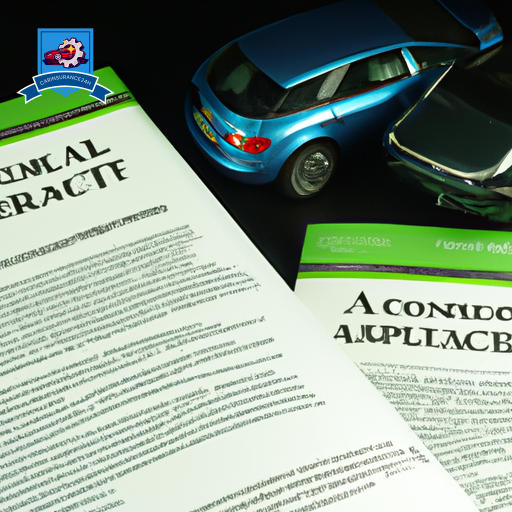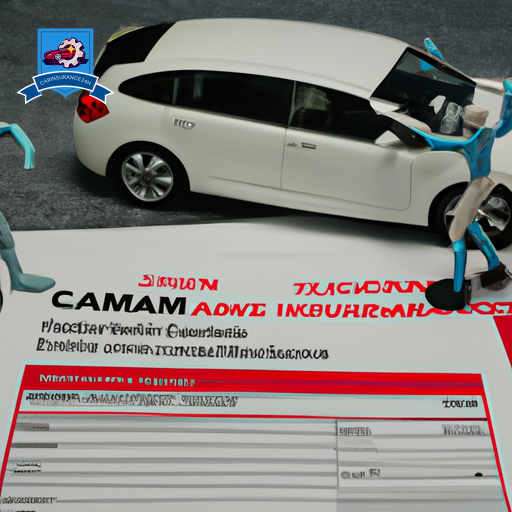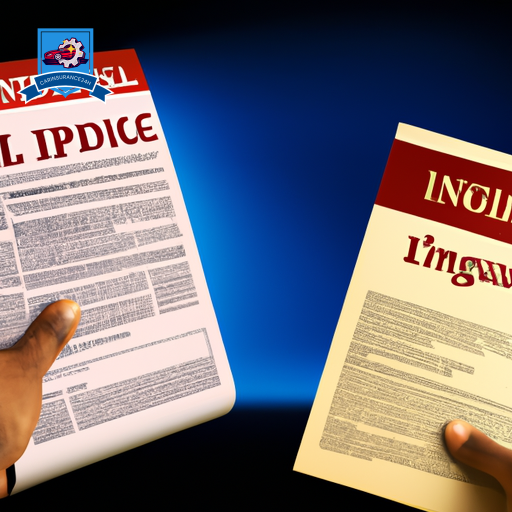In the domain of automotive insurance, Personal Injury Protection (PIP) emerges as a pivotal component, providing coverage for medical expenses, lost wages, and other related costs following an accident regardless of fault.
The cost of PIP insurance, however, is not a static figure, influenced by a myriad of factors including the policyholder’s location, driving history, and the level of coverage selected. As we navigate through the intricacies of PIP costs, understanding these variables becomes essential.
This exploration will not only illuminate the average prices and state-by-state variations but also offer insights into optimizing coverage in alignment with one’s financial and protective needs.
Understanding Personal Injury Protection

Personal Injury Protection (PIP), a pivotal component of auto insurance policies in many states, is designed to cover medical expenses and, in some cases, lost wages and other damages, regardless of who is at fault in an accident. This no-fault coverage guarantees that parties involved in a vehicle collision receive immediate medical attention without waiting for a determination of fault, which can often be a lengthy process. PIP benefits serve as a buffer, providing financial relief from the unforeseen expenses that follow an accident.
The scope of PIP coverage can vary greatly from one policy to another, reflecting differences in the minimum requirements set by states that mandate its inclusion. Generally, PIP benefits extend to cover medical bills, rehabilitation costs, funeral expenses, and compensation for lost wages. Some policies may also offer coverage for services necessitated by the accident, such as childcare expenses if the injured party is unable to provide care due to their injuries.
However, it is essential to understand the coverage exclusions within PIP policies. These exclusions can include injuries sustained while committing a felony, injuries from accidents involving non-roadworthy vehicles, or injuries to individuals who intentionally cause harm to themselves. Additionally, PIP coverage does not extend to damage to the vehicle itself or to the personal property inside. Understanding these exclusions is important for policyholders to fully comprehend the extent of their coverage and the situations under which they may not be protected by PIP.
Factors Affecting PIP Costs
The cost of Personal Injury Protection (PIP) is influenced by several critical factors.
These factors include state mandates and coverage requirements, the driver’s risk profile, and the characteristics of the vehicle, such as its type and age.
Each of these elements plays a significant role in determining the overall expense of securing PIP.
Understanding these variables is essential for individuals seeking to obtain inclusive coverage at a manageable cost.
State Mandates and Coverage
Understanding how state mandates and coverage requirements influence the cost of Personal Injury Protection (PIP) is essential for policyholders. Each state has its own legal requirements for PIP, which can greatly affect premiums. Some states may offer coverage exemptions under certain conditions, further complicating the overall cost landscape for consumers.
| State | Minimum PIP Coverage | Coverage Exemptions |
|---|---|---|
| Florida | $10,000 | Non-residents |
| Michigan | Unlimited | Drivers with health insurance |
| New Jersey | $15,000 | None |
| New York | $50,000 | None |
This table exemplifies the variance in state mandates, illustrating how geographical location and specific state laws play a critical role in determining PIP costs.
Driver Risk Profile
Several factors related to a driver’s risk profile greatly influence the cost of Personal Injury Protection (PIP) insurance premiums. Insurance providers meticulously evaluate a range of elements to accurately assess the risk associated with insuring a driver. This assessment plays a pivotal role in determining the premium costs for PIP coverage.
Key factors include:
- Driving Record: A history of accidents or traffic violations can substantially increase premiums.
- Driver Training: Completion of certified driving courses may lower rates by demonstrating a lower risk profile.
- Age and Experience: Younger, less experienced drivers typically face higher premiums due to a perceived higher risk of accidents.
- Weather Conditions: Living in areas prone to adverse weather may impact rates, as poor conditions increase the likelihood of accidents.
These factors collectively contribute to the assessment of a driver’s risk profile, directly affecting PIP insurance costs.
Vehicle Type and Age
Vehicle characteristics, including type and age, greatly influence Personal Injury Protection (PIP) insurance premiums, underscoring the intricate relationship between automobile attributes and insurance costs.
Newer, high-end vehicles often command higher PIP rates due to their expensive repair and replacement parts. Conversely, older cars might incur lower premiums, albeit potentially higher maintenance frequency, impacting overall costs indirectly.
The vehicle’s type also plays a vital role; sports cars, known for their high performance, may attract higher premiums compared to more fuel-efficient, family-oriented models. Insurers consider these factors to assess risk and determine appropriate premiums, making the choice of vehicle a significant consideration for consumers looking to manage their PIP insurance expenses effectively.
Average PIP Coverage Prices
Moving forward, an exploration into the average prices of Personal Injury Protection (PIP) coverage reveals a complex landscape shaped by various elements.
Among these, determining factors, state variations, and the impact of policy limits play pivotal roles in shaping the cost.
Each of these aspects contributes to the fluctuating nature of PIP coverage prices across different jurisdictions.
Determining Factors
The average prices for Personal Injury Protection (PIP) coverage vary widely, influenced by several key factors. Understanding these determinants is important for policyholders aiming to navigate the intricacies of coverage exclusions and the claim process efficiently.
Factors that impact the cost of PIP coverage include:
- Driver’s Risk Profile: Age, driving history, and credit score can affect premiums.
- Vehicle Type: The make, model, and safety features of a vehicle play a role.
- Coverage Limits: Higher limits typically result in higher premiums.
- Deductible Amounts: Choosing a higher deductible can lower the cost of PIP coverage but increases out-of-pocket costs for claims.
These elements collectively contribute to the diversity in PIP coverage prices, emphasizing the need for personalized insurance consultations.
State Variations
Understanding the factors that impact the cost of Personal Injury Protection (PIP) coverage sets the stage for a deeper exploration into how these costs vary dramatically from one state to another.
The variance in average PIP coverage prices across states can be attributed primarily to regional demographics and local legislation. Regional demographics influence the risk assessment insurers undertake, with areas having higher populations or more dense traffic patterns often seeing higher PIP costs.
Concurrently, local legislation plays a pivotal role, as states with more stringent requirements for PIP coverage may enforce policies that inherently cost more. This legislative landscape means that insurers must navigate a complex web of state-specific rules, which directly affects the pricing of PIP coverage for consumers.
Policy Limits Impact
Policy limits greatly influence the average prices of Personal Injury Protection (PIP) coverage, varying by state due to differing legislative mandates and coverage requirements. The extent of coverage, including maximum payout amounts, directly impacts the premium costs. Understanding the relationship between policy limits and the cost of PIP insurance is essential for policyholders seeking both adequate protection and cost efficiency.
Key aspects affected by policy limits include:
- The depth of coverage exclusions
- The ease and flexibility of the claim process
- The overall financial protection against medical expenses
- The coverage for lost wages and rehabilitation costs
State-by-State Price Variations
Personal injury protection (PIP) insurance premiums exhibit notable variations across different states, influenced by local regulations, claim frequencies, and coverage levels. Factors such as regional demographics and weather patterns play a substantial role in determining the cost of PIP coverage in a specific area.
For instance, states with denser populations may experience higher accident rates, leading to increased claim frequencies and, consequently, higher insurance premiums. Additionally, areas prone to severe weather events, such as hurricanes or heavy snowfall, might see a spike in accident-related claims, further driving up the cost of PIP insurance.
Furthermore, the legal framework governing PIP insurance in each state significantly impacts premium rates. Some states operate under a no-fault insurance system, requiring drivers to carry PIP coverage to help cover medical expenses, regardless of who is at fault in an accident. These no-fault states often see higher PIP premiums due to the broad protection offered.
In contrast, states that do not mandate PIP coverage may have lower average premiums, reflecting the decreased risk assumed by insurers. The extent of coverage required by state law also affects PIP insurance costs. States with higher minimum coverage requirements impose additional costs on insurers, which are then passed on to policyholders in the form of higher premiums.
Conversely, states with more modest coverage requirements may offer more affordable PIP options. It is important for consumers to understand these state-by-state price variations to make informed decisions about their personal injury protection insurance, ensuring they receive the coverage they need at a price that reflects their specific risk profile and state regulations.
Choosing the Right Coverage Level
Given the state-by-state price variations previously discussed, selecting an appropriate level of personal injury protection coverage becomes a significant factor for consumers aiming to balance cost with the need for adequate protection. This decision-making process involves understanding the unique aspects of one’s financial situation, driving habits, and personal risk tolerance. Coverage flexibility and policy customization play pivotal roles in this scenario, allowing individuals to tailor their protection to meet specific needs.
When considering the right coverage level, the following factors should be kept in mind:
-
Assessment of Personal Risk: Evaluate your daily driving conditions, the frequency of your vehicle use, and any specific risks associated with your location or lifestyle.
-
Financial Capacity: Determine the amount you can comfortably afford to pay in premiums without compromising other financial obligations. This includes considering your ability to handle potential out-of-pocket expenses in the event of an accident.
-
Coverage Flexibility: Look for policies that offer flexibility in coverage limits and deductibles. This allows for adjustments based on changing needs or financial situations.
-
Policy Customization Options: Seek out insurance providers that offer extensive customization options. This enables the inclusion of additional protections that might be particularly relevant to your circumstances, such as coverage for lost wages or extended medical benefits.
Discounts and Savings Opportunities
Exploring discounts and savings opportunities can substantially lower the overall cost of personal injury protection insurance for conscientious consumers. Many insurance providers offer a range of discount options that are designed to encourage responsible behavior and reward customer loyalty. By understanding and taking advantage of these opportunities, individuals can achieve significant savings on their insurance premiums while still enjoying thorough coverage.
One of the most accessible discounts comes from managing your insurance transactions online. Online discounts are often provided to customers who opt to handle their policy management tasks through the insurer’s website or mobile app. This can include actions such as signing up for a policy, paying premiums, or submitting claims. The rationale behind online discounts is twofold: it reduces administrative costs for the insurer, and it promotes a more environmentally friendly approach by minimizing paper usage.
Loyalty rewards represent another avenue for savings. Insurance companies value long-term relationships with their clients and often offer loyalty discounts as an incentive for renewal. These rewards can take various forms, including reduced premiums or bonus coverage options, and typically become more substantial the longer you remain with the same insurer. It’s a win-win situation: the company retains a reliable customer, and the consumer benefits from lower costs and potentially enhanced protection.
Comparing Insurers for Best Rates
While discovering and utilizing discounts is a key strategy for reducing insurance costs, equally important is the process of comparing insurers to secure the best rates for personal injury protection. Given the variety in pricing and coverage options across different insurance providers, a thorough comparison is important for obtaining the best coverage at the most reasonable cost.
To navigate this complex landscape effectively, policyholders should consider the following strategies:
-
Utilize Coverage Comparison Tools: Many online platforms now offer tools that allow users to compare personal injury protection policies from various insurers side by side. These tools can help identify the best value options by highlighting differences in coverage limits, deductibles, and premium rates.
-
Engage in Insurance Negotiation: Don’t hesitate to negotiate with insurers. Armed with quotes and terms from competitors, you may be able to secure a more favorable rate or better coverage terms from your current or potential new insurer.
-
Read Reviews and Ratings: Beyond just the numbers, look at insurer reviews and financial stability ratings. A lower rate might not be worthwhile if it comes from a company with poor customer service or financial instability.
-
Seek Professional Advice: Insurance agents or brokers can provide personalized advice based on your specific needs and circumstances. They may also have access to deals or knowledge about insurers that aren’t readily available to the general public.
Increasing PIP Cost Trends
In recent years, there has been a noticeable uptrend in the cost of Personal Injury Protection (PIP) insurance, impacting policyholders nationwide. This rise in premiums can be attributed to a variety of factors, but two of the most significant are weather influences and legal reforms. Understanding these elements is important for policyholders seeking to navigate the changing landscape of PIP insurance costs.
Weather influences have become a critical factor in the increasing trend of PIP costs. Severe weather events, such as hurricanes, floods, and wildfires, have become more frequent and intense due to climate change. These events often result in a high volume of claims, putting pressure on insurance companies to raise premiums to cover their increased liabilities. For example, after a major hurricane, the volume of claims for injuries can spike, leading to a surge in PIP claims payouts. This necessitates an adjustment in premium rates to make sure the insurance providers can continue to cover future claims.
Legal reforms also play an important role in the cost dynamics of PIP insurance. In several states, reforms aimed at reducing fraud and streamlining the claims process have inadvertently led to increased administrative costs and legal fees. These expenses are, in turn, passed on to the consumers in the form of higher premiums. Additionally, some reforms have expanded the scope of coverage under PIP policies, further driving up costs. As legislators and regulators continue to grapple with these issues, the impact of legal reforms on PIP insurance costs remains a moving target.
Frequently Asked Questions
How Does Filing a Personal Injury Protection (Pip) Claim Affect Future Insurance Premiums?
Filing a Personal Injury Protection (PIP) claim can impact future insurance premiums, with premium factors such as claim frequency playing a significant role. Insurers may adjust rates based on the frequency and nature of claims submitted.
Can PIP Coverage Be Extended to Family Members Not Listed on the Policy?
Extending Personal Injury Protection (PIP) coverage to family members not listed on the policy typically requires policy amendments, as coverage limitations often restrict benefits to named insureds and resident relatives under the original terms.
How Does PIP Interact With Health Insurance and Other Medical Coverage in the Event of an Accident?
Personal Injury Protection (PIP) supplements health insurance by covering medical expenses post-accident, considering coverage limits and deductible implications. It prioritizes payouts before other medical coverages, streamlining the compensation process for immediate and necessary medical care expenses.
Are There Any Specific Exclusions or Common Scenarios Where PIP Coverage Would Not Apply?
Traversing the maze of insurance, it’s crucial to grasp that PIP coverage may have blind spots, including deductible requirements and coverage limits, that determine situations where benefits are not applicable, despite initial appearances.
Can PIP Coverage Be Purchased Separately From a Standard Auto Insurance Policy?
Personal Injury Protection (PIP) coverage can typically be purchased as part of a standard auto insurance policy, subject to coverage limits and state regulations. Availability as a separate policy may vary depending on jurisdictional laws.










